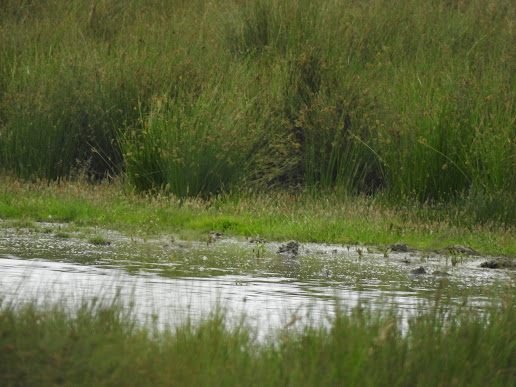There was one important detail about last week's visit which I deliberately missed out. A schedule 1 species was sitting on eggs at the nearest flash. As it is illegal to knowingly interfere with the nest of such a rare bird I took steps to ask Natural England, under whose stewardship I believe the field is managed, to liaise with the farmer in the hope he would delay his flooding of the scrape/flash for long enough to allow the eggs to hatch. This would be the first time Avocet had bred in Warwickshire.
 |
| That was then. |
I received no useful feedback from Natural England, although they did forward my email to their Enquiries email address, so I just had to hope the message got through.
Perhaps it didn't (or was never acted on) because this morning my worst fears were confirmed.
 |
| This is now |
There has been a thunderstorm in the week, but in my experience of the site that is unlikely to be the reason the water level has risen.
The only good news is that the Avocets are still present, indeed there are now two pairs, so perhaps they will re-lay if the water level goes down again. I should also say that the pair of Shelduck with eight young were probably delighted by the turn of events.
A Green Sandpiper also remains, but can only be seen when it takes flight. The Little Ringed Plovers on the other hand seem to have gone. One other decent bird turned up, a non-calling Cuckoo, maybe a female, which flew over us at the place from which we view the flash.
We saw a good range of the insects we've come to expect here. These included only my first Small Tortoiseshell of the year, the micro-moth Satin Grass-moth Crambus perlella (my first here), a few Marbled White butterflies, and a Comma.
 |
| Satin Grass-moth |
 |
| Comma |
It's a sad state of affairs how scarce the once abundant Small Tortoiseshell has become during my lifetime.

No comments:
Post a Comment